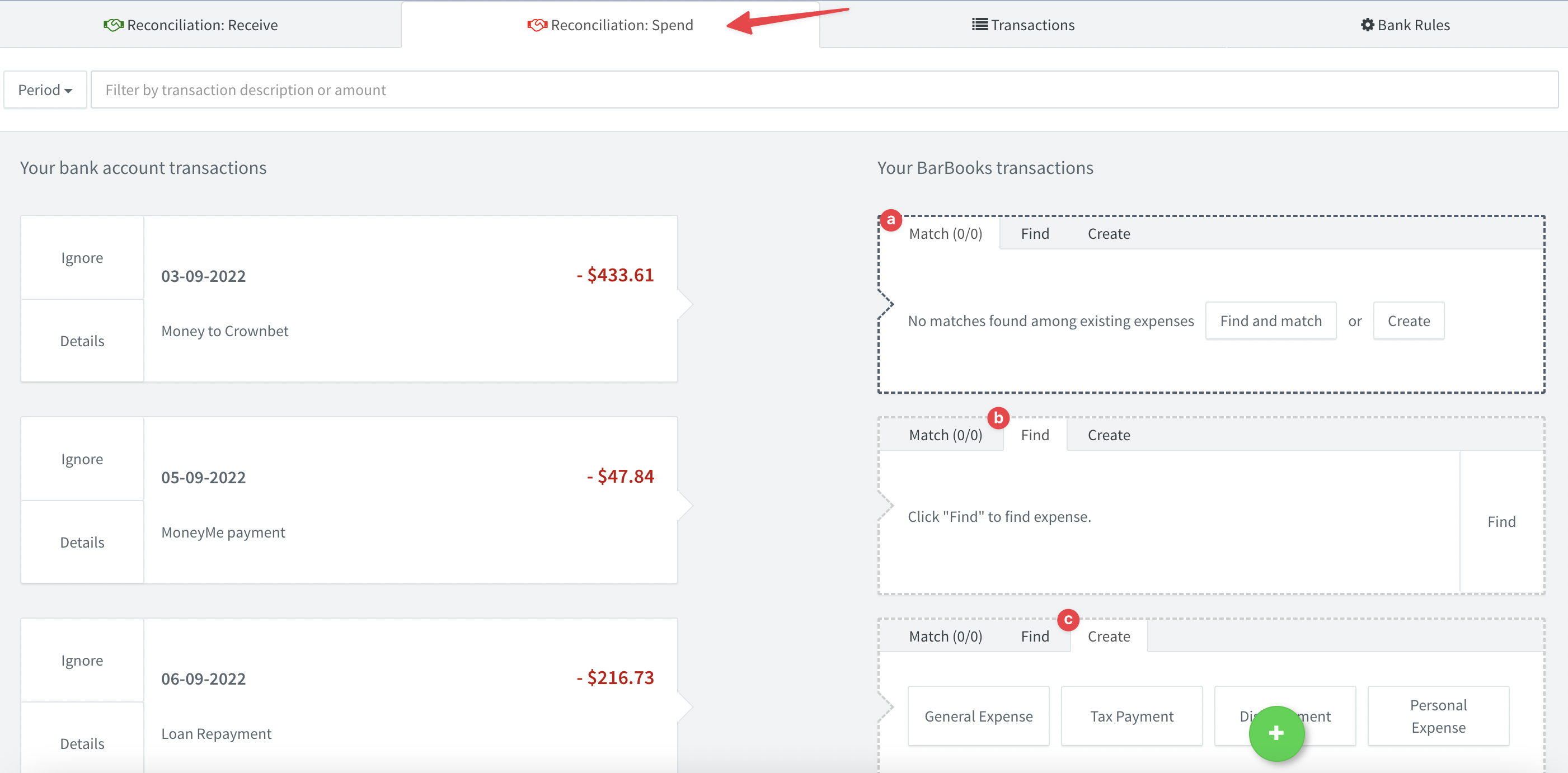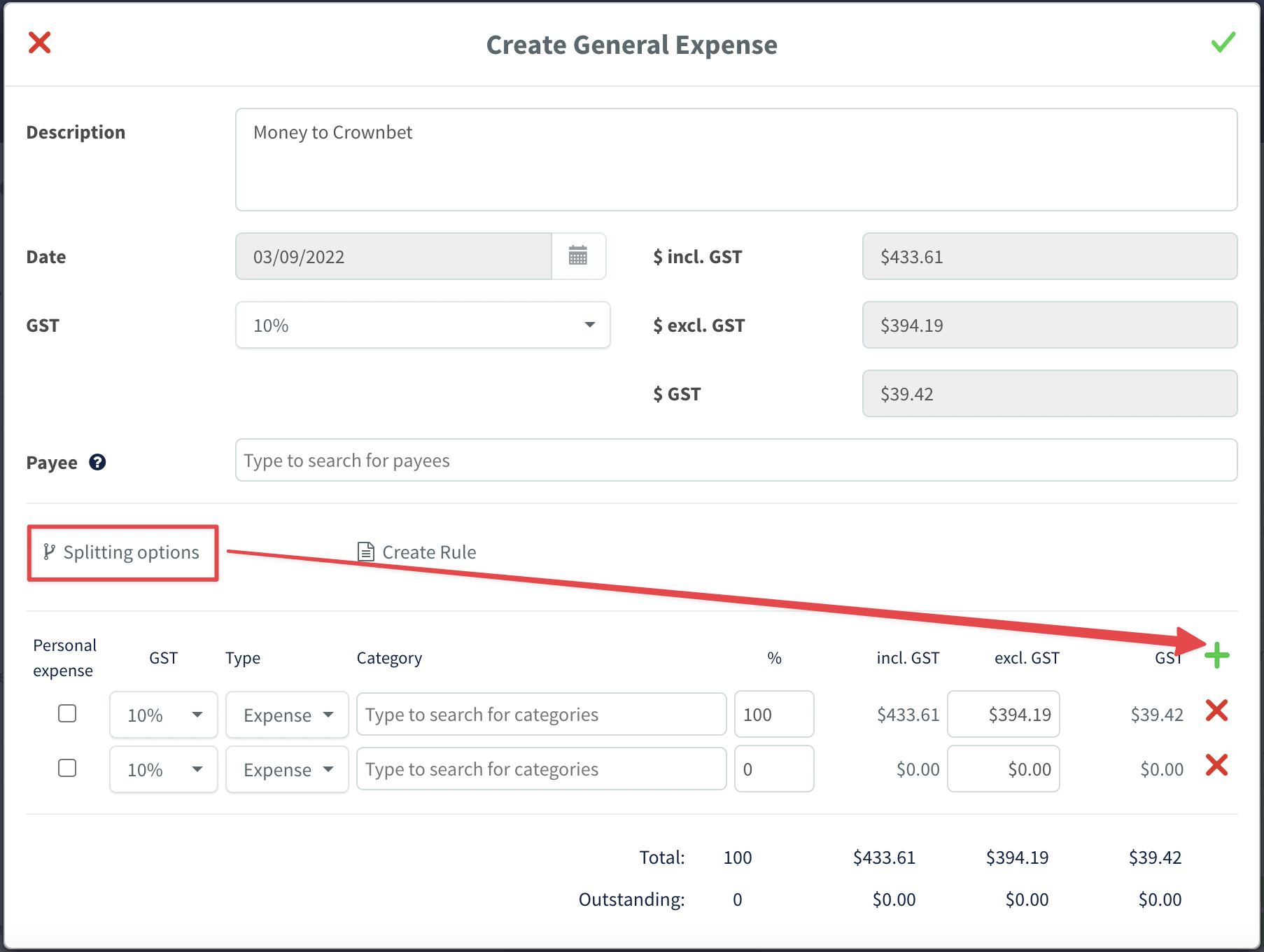Overview of how to reconcile transactions in the Bank Rec tab
Once the Bank accounts are added and transactions are imported, you may now proceed with Reconciliation.
Reconciliation: Receive Tab

- Click the Reconciliation: Receive tab within the selected Bank Account.
- There are 3 ways you can reconcile a Bank Transaction to a BarBooks record – Match, Find, Create.
a. Match – BarBooks automatically finds and suggests an existing invoice or receipt that is a possible match to your bank transaction. The amount and date of the invoice or receipt should be the same as the bank transaction. The date should be same or earlier than the bank transaction. To reconcile, click the green Match button located in between the transactions.
b. Find – if there is already an invoice or receipt created in your account, you can search for it here. Locate the invoice or receipt, then reconcile by clicking the Match button.
c. Create – by using this option, you can create new receipt records in BarBooks as you see the bank transactions come into your bank account while you are reconciling. Choose which type of receipt you wish to create: Matter Receipt, General Receipt, or Tax Refund. You can check the Receipts tab for the all the receipts created from bank reconciliation. - Types of Income
a. Matter receipt - It is created when the payment is received for an invoice.
b. General receipt - This is classified for other income not invoice related.
c. Tax Refund - Record of your overpayment of taxes.
Reconciliation: Spend Tab

- Click the Reconciliation: Spend tab within the selected Bank Account.
- There are 3 ways you can reconcile a Bank Transaction to a BarBooks record – Match, Find, Create.
a. Match – BarBooks automatically finds and suggests an existing expense record that is a possible match to your bank transaction. The amount and date of the expense should be the same with the bank transaction. To reconcile, click the green Match button located between the transactions. Please note that when you hit match, the transactions will just be reconciled and there will not be a duplicate entry.
b. Find – if there is already an expense created in your account, you can just search it here. Locate and select an expense, then reconcile by clicking the Match button. If the expense from BarBooks transaction is less than the bank transaction you may still add another expense or just partly reconcile it. You may adjust the amount or edit the details of the expense by clicking the pencil icon.
c. Create – by using this option, you can create new expense records in BarBooks as you see the bank transactions leave your bank account while you are reconciling. Just choose the type of expense record you wish to create: General Expense, Tax Payment, Disbursement, or Personal Expense. You can check the Expense tab for all expenses created from reconciliation. - Types of Income
a. Disbursement - this is an expense made to a third party then charged to a client. Matter related expense.
b. General Expense - Business related expenses such as floor fees, subscriptions, memberships and the like.
c. Tax Payment - payments made to ATO. May be Income tax and GST payments.
d. Personal Expense - expenses not related to the practice. Some barristers record this for budgeting purposes.
Transactions Tab
This tab lists all the bank transactions whether ignored, reconciled, or unreconciled.

- You may Ignore any transactions here. Select from the list by ticking the checkbox next to the description, then click the Ignore button. Transfers, withdrawals, loans, and Personal transactions are usually ignored.
- You may also Reinstate the ignored transactions by ticking the transaction and clicking the Reinstate button.
- You also have the option to Un-reconcile and reconciled transactions.
- To see the details of the transaction, click the Details button. Within the Transaction details box, you may click on Receipts, Invoices, Expenses links to see the additional details.
Bank Rule

- To create a Bank Rule, go to the Bank Rules tab.
- Click the Add rule button.
- Select from the dropdown list the type of rule.
- Fill-in all required information, then click the OK button to save.
Splitting Options


- To split a General Expense, go to the Reconciliation: Spend tab, select General Expense as the type.
- Click the Splitting option icon.
- Click the add button to determine how many times the transaction should be split.
- Fill-in all the required information, and make sure that there is no outstanding amount.
- Tick the box of the Personal expense for personal transactions.
- When setting the splitting options for Spend Money Rules, you may choose the type of splitting – it may be by amount or percentage. If it’s percentage, it must total to 100%.
- Splitting options can also be found when you are creating a Spend rule with General Expense as the type.